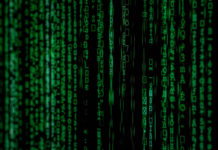Ericsson ConsumerLab: Consumers expect an internet of things
http://www.thailand4.com/.comm/2014-08-13/dabab03cfc2f77cbace41d4df6b41037/
Telecommunication Press Releases Wednesday August 13, 2014 10:14
Bangkok–13 Aug–Ericsson
As we increasingly use mobile devices and download new apps, it is only natural that consumer views about the internet are changing. But more surprisingly – and ultimately more importantly – our fundamental views on the physical world are changing too. This report from Ericsson ConsumerLab shows that as consumers spend more time in front of screens, they also expect other physical things to be interactive and connected.
“Analyzing the expanding use of mobile devices and services in the light of how particularly younger generations are moving from passive to interactive screens has been an eye opener,” says Bunyati Kirdniyom, Head of Communications and Regulatory Affairs, Ericsson Thailand. “When total screen time surpasses the time spent on any other everyday activity, including work, consumers may expect the world to behave like their screens.”
Key interesting findings from this report are:
1. Computers and the internet initially mimicked the physical world:
Until now, digital environments were designed to reflect the actual world, in order for us to understand them. But consumers are becoming less dependent on references to physical things such as desktops, files, folders, trashcans and telephone lines.
2. Firsthand experiences are increasingly via screens:
People are now exposed to screens from a young age, so the relationship between screen and physical experiences is being reversed.
3. We now want the physical world to mimic the internet:
There will be a growing expectation for the physical world to be as interactive as our screens. Things should respond to touch and be able to handle information.
It is clear that our expectation for everyday places and objects to be as connected and interactive as the screens we have today will drive consumer demand for a rapidly expanding internet of things.
Society is now at a crossroads regarding our understanding and expectations of how the internet integrates with the physical world.
Many city dwellers spend more time in front of screens than on any other activity, and connected screen time is increasing, particularly for younger generations.
We are leaving older metaphors such as those for desks and filing cabinets behind, and are beginning to understand digital devices as being connected to a cloud that although always changing, essentially remains the same.
Cloud services are driven by the rising use of multiple devices that need to be synchronized, as well as the fact that many mobile devices have limited storage space. As we get used to exploring cloud services while using them, we increasingly expect to be able to do the same with physical things in our surroundings as well. Privacy issues will likely be debated as this occurs.
It is clear that our expectation for everyday places and objects to be as connected and interactive as the screens we have today will drive consumer demand for a rapidly expanding internet of things.
Methodology
This report collects insights from several recent projects with a view to exploring how consumers are starting to think about the world as an internet of things. Ericsson ConsumerLab gains its knowledge through a global consumer research program based on interviews with 100,000 individuals each year, in more than 40 countries and 15 megacities – statistically representing the views of 1.1 billion people.









